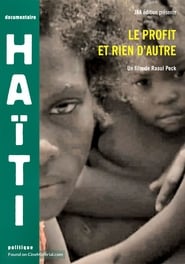
Video Sources 0 Views

Synopsis
Watch: Koko: The Gorilla Who Talks to People 2016 123movies, Full Movie Online – Documentary telling the extraordinary story of Koko, the only ‘talking’ gorilla in the world, and her lifelong relationship with Penny Patterson. Project Koko started as a PhD project to teach sign language to a baby gorilla, but ….
Plot: Documentary telling the extraordinary story of Koko, the only ‘talking’ gorilla in the world, and her lifelong relationship with Penny Patterson. Project Koko started as a PhD project to teach sign language to a baby gorilla, but as Koko began to communicate with Penny, an intense bond formed between them. Penny has now been with Koko for over 40 years and claims Koko can reveal fresh insights into the workings of an animal’s mind. Koko’s unique life with Penny has been filmed every step of the way. Over 2,000 hours of footage chart the most dramatic moments – Penny’s battle to keep Koko from being taken back to the zoo in which she was born, Penny’s clash with academic critics who doubted her claims and the image of Koko mourning the death of her kitten.
Smart Tags: N/A
Find Alternative – Koko: The Gorilla Who Talks to People 2016, Streaming Links:
123movies | FMmovies | Putlocker | GoMovies | SolarMovie | Soap2day
Ratings:
Reviews:
Is Koko the Gorilla Using Language or Simply Mimmicking
The great scientist and linguist Noam Chomsky argues that language is a unique evolutionary development of the human species and is unlike modes of communication used by any other animal species. In short, humans are the only species who use “language”, according to Chomsky. A test-case begun in the early 1970’s, Koko the Gorilla and her care-giver Penny, are challenging this human-centric nativist view. While certainly Koko the Gorilla probably doesn’t have the capacity to read Greek and write analyses about James Joyce’s “Ulysses”, based on the video presentations, Koko clearly has internal thoughts and feelings, and she can express those thoughts in a form of sign-language adapted from the sign-language for the deaf. Of course, this is only an assessment of a layman who doesn’t have scientific credentials. Not all of the scientific community, according to the documentary, is convinced that Koko or any other primates have the capability to express unique thoughts through some sort of language.The present documentary, “Koko: The Gorilla Who Talks to People”, makes the case that Koko is not just imitating her care-givers’ gestures to get goodies. She’s using sign-language to express complex inner thoughts and emotions. While I do believe it’s a mistake to think that gorillas think and see the world in the same way as human beings, the point is that she is constructing her thoughts into recognizable patterns through her sign-language. If this is not language, maybe I don’t understand the term. Scientists on the skeptics side have claimed Koko really isn’t engaging in language because Koko’s signing lacks the grammatical complexity of say a Western language like English, French, German or Italian. In English, we make the distinction between “boy eats sandwich” and “sandwich eats boy”. While such subtlety of word-order may not be the case with Koko, generally speaking, she does appear to be expressing unique thoughts, not just engaging in “monkey see, monkey do”. So my question is: does a language have to be grammatically intricate to be a language?
The documentary chronicles the history and goals of her care-givers, particularly Penny Patterson who is really a mother figure in Koko’s life, and how they want to better understand the inner thought processes of non-human primates. As shocking as it seems to us now, as recently as the 1970’s, it was believed that animals didn’t really have thoughts and emotions, and they were just organisms which respond to stimuli. The ground-breaking work of Jane Goodall and Dian Fossey was still on the edge of scientific recognition, showing how non-human primates exhibited much behavior strikingly similar to humans. At the very least, Goodall and Fossey proved that apes and chimps definitely have thoughts and emotions. Penny Patterson decided to take the idea one step further and see if we could understand better the inner reality of a primate by not only raising her from birth with humans but teaching her sign language to communicate. And she was of course Koko the Gorilla.
Much of the documentary shows Koko spewing out sign-language words in no particular order but they clearly are unique messages of her thought processes. If she signs the words “Koko, love, hug”, she’s clearly saying she loves someone and wants to give him/her a hug, even though she’s not using a precise word order. Koko at one point asked for a pet, and her care-givers gave her a stuffed animal, but Koko clearly didn’t want a stuffed toy, and kept signing “sad”. She wanted a real animal. She was shown a litter of kittens not long afterwards and selected a gray kitten who she named “All Ball” because the kitten was like a little ball of fur, I suspect. Koko and All Ball became best buddies. There are few images which tug at our heart-strings than that of Koko, a gorilla who probably has the strength of about 10 men, holding little All Ball. The image is strikingly maternal, like a mother and child. Koko has so many of the same emotions humans have. The late Robin Williams had visited Koko a few times, and when news of his death was told to Koko, she became very sad and somber. She seemed to remember not only who he was but that he was no longer with us.
One of the things which makes this documentary exceptional is that it gives some of the skeptics sides. The scientific community is on the fence in terms of believing Koko is really using language. One of the counter-examples is the chimp called Nim, who seems to be engaging in “monkey see, monkey do”, unlike Koko. However, as Penny points out, Nim was never with a single care-giver but “examined” by many different scientists who didn’t conclude he was engaging with them at a linguistic level. Penny hypothesizes that it’s not like a primate will automatically engage with anyone who comes in their midst. Just like humans, gorillas and chimps need to be in a relationship where they can interact with those they like. (Human teenagers can also be surprisingly uncommunicative to adults they don’t know.)
Luckily, I think the skeptics are becoming a minority. Penny and her colleagues had to use their understanding of Koko to adopt her and keep her from being sent back to the zoo. At that time, zoo owners didn’t believe such animals would care about who they were with, again a behaviorist view of psychology, particularly pertaining to animals. Whether or not someone has been convinced that there’s more going on in Koko’s mind than simple stimuli-response, she’s making a compelling case. I’m one of those who’s been sold, hook, line and sinker.
Review By: classicalsteve
Is Koko the Gorilla Using Language or Simply Mimmicking
The great scientist and linguist Noam Chomsky argues that language is a unique evolutionary development of the human species and is unlike modes of communication used by any other animal species. In short, humans are the only species who use “language”, according to Chomsky. A test-case begun in the early 1970’s, Koko the Gorilla and her care-giver Penny, are challenging this human-centric nativist view. While certainly Koko the Gorilla probably doesn’t have the capacity to read Greek and write analyses about James Joyce’s “Ulysses”, based on the video presentations, Koko clearly has internal thoughts and feelings, and she can express those thoughts in a form of sign-language adapted from the sign-language for the deaf. Of course, this is only an assessment of a layman who doesn’t have scientific credentials. Not all of the scientific community, according to the documentary, is convinced that Koko or any other primates have the capability to express unique thoughts through some sort of language.The present documentary, “Koko: The Gorilla Who Talks to People”, makes the case that Koko is not just imitating her care-givers’ gestures to get goodies. She’s using sign-language to express complex inner thoughts and emotions. While I do believe it’s a mistake to think that gorillas think and see the world in the same way as human beings, the point is that she is constructing her thoughts into recognizable patterns through her sign-language. If this is not language, maybe I don’t understand the term. Scientists on the skeptics side have claimed Koko really isn’t engaging in language because Koko’s signing lacks the grammatical complexity of say a Western language like English, French, German or Italian. In English, we make the distinction between “boy eats sandwich” and “sandwich eats boy”. While such subtlety of word-order may not be the case with Koko, generally speaking, she does appear to be expressing unique thoughts, not just engaging in “monkey see, monkey do”. So my question is: does a language have to be grammatically intricate to be a language?
The documentary chronicles the history and goals of her care-givers, particularly Penny Patterson who is really a mother figure in Koko’s life, and how they want to better understand the inner thought processes of non-human primates. As shocking as it seems to us now, as recently as the 1970’s, it was believed that animals didn’t really have thoughts and emotions, and they were just organisms which respond to stimuli. The ground-breaking work of Jane Goodall and Dian Fossey was still on the edge of scientific recognition, showing how non-human primates exhibited much behavior strikingly similar to humans. At the very least, Goodall and Fossey proved that apes and chimps definitely have thoughts and emotions. Penny Patterson decided to take the idea one step further and see if we could understand better the inner reality of a primate by not only raising her from birth with humans but teaching her sign language to communicate. And she was of course Koko the Gorilla.
Much of the documentary shows Koko spewing out sign-language words in no particular order but they clearly are unique messages of her thought processes. If she signs the words “Koko, love, hug”, she’s clearly saying she loves someone and wants to give him/her a hug, even though she’s not using a precise word order. Koko at one point asked for a pet, and her care-givers gave her a stuffed animal, but Koko clearly didn’t want a stuffed toy, and kept signing “sad”. She wanted a real animal. She was shown a litter of kittens not long afterwards and selected a gray kitten who she named “All Ball” because the kitten was like a little ball of fur, I suspect. Koko and All Ball became best buddies. There are few images which tug at our heart-strings than that of Koko, a gorilla who probably has the strength of about 10 men, holding little All Ball. The image is strikingly maternal, like a mother and child. Koko has so many of the same emotions humans have. The late Robin Williams had visited Koko a few times, and when news of his death was told to Koko, she became very sad and somber. She seemed to remember not only who he was but that he was no longer with us.
One of the things which makes this documentary exceptional is that it gives some of the skeptics sides. The scientific community is on the fence in terms of believing Koko is really using language. One of the counter-examples is the chimp called Nim, who seems to be engaging in “monkey see, monkey do”, unlike Koko. However, as Penny points out, Nim was never with a single care-giver but “examined” by many different scientists who didn’t conclude he was engaging with them at a linguistic level. Penny hypothesizes that it’s not like a primate will automatically engage with anyone who comes in their midst. Just like humans, gorillas and chimps need to be in a relationship where they can interact with those they like. (Human teenagers can also be surprisingly uncommunicative to adults they don’t know.)
Luckily, I think the skeptics are becoming a minority. Penny and her colleagues had to use their understanding of Koko to adopt her and keep her from being sent back to the zoo. At that time, zoo owners didn’t believe such animals would care about who they were with, again a behaviorist view of psychology, particularly pertaining to animals. Whether or not someone has been convinced that there’s more going on in Koko’s mind than simple stimuli-response, she’s making a compelling case. I’m one of those who’s been sold, hook, line and sinker.
Review By: classicalsteve
Other Information:
Original Title Koko: The Gorilla Who Talks to People
Release Date 2016-06-15
Release Year 2016
Original Language en
Runtime N/A
Budget 0
Revenue 0
Status Released
Rated Not Rated
Genre Documentary
Director Jonathan Taylor
Writer N/A
Actors Bertie Carvel, Leonardo DiCaprio, Peter Gabriel
Country United Kingdom
Awards N/A
Production Company N/A
Website N/A
Technical Information:
Sound Mix N/A
Aspect Ratio N/A
Camera N/A
Laboratory N/A
Film Length N/A
Negative Format N/A
Cinematographic Process N/A
Printed Film Format N/A
Original title Koko: The Gorilla Who Talks to People
TMDb Rating 7.8 9 votes





















